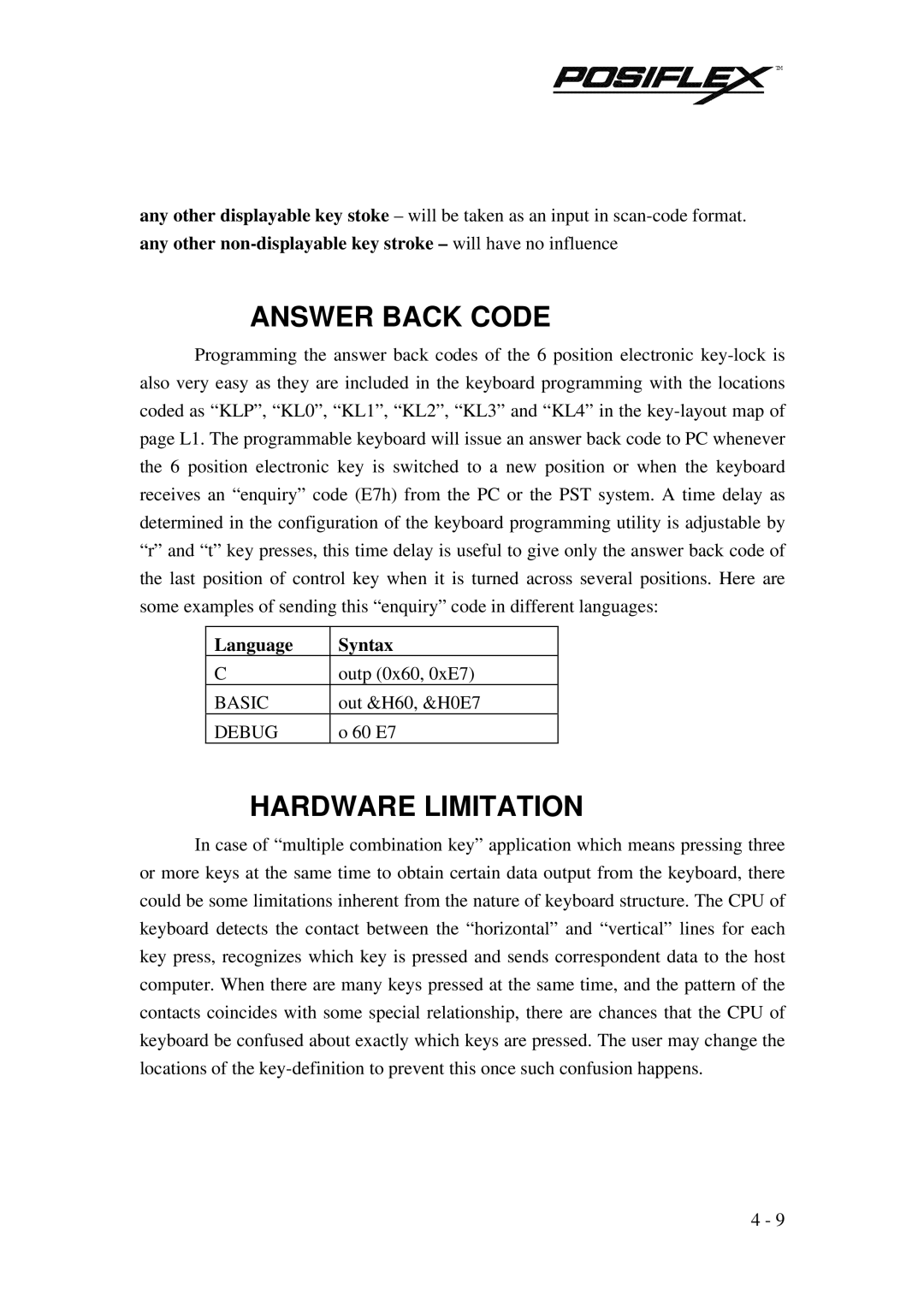![]()
![]()
![]()
![]()
![]()
![]()
![]()
![]()
![]() TM
TM
any other displayable key stoke – will be taken as an input in
any other
ANSWER BACK CODE
Programming the answer back codes of the 6 position electronic
Language | Syntax |
C | outp (0x60, 0xE7) |
BASIC | out &H60, &H0E7 |
DEBUG | o 60 E7 |
HARDWARE LIMITATION
In case of “multiple combination key” application which means pressing three or more keys at the same time to obtain certain data output from the keyboard, there could be some limitations inherent from the nature of keyboard structure. The CPU of keyboard detects the contact between the “horizontal” and “vertical” lines for each key press, recognizes which key is pressed and sends correspondent data to the host computer. When there are many keys pressed at the same time, and the pattern of the contacts coincides with some special relationship, there are chances that the CPU of keyboard be confused about exactly which keys are pressed. The user may change the locations of the
4 - 9
